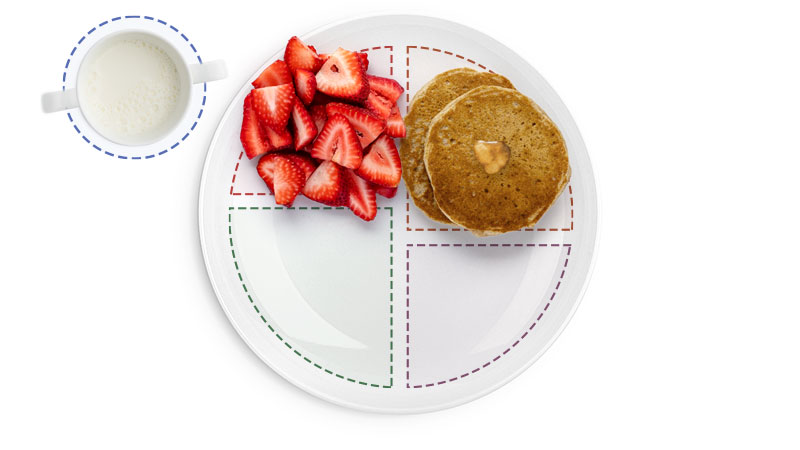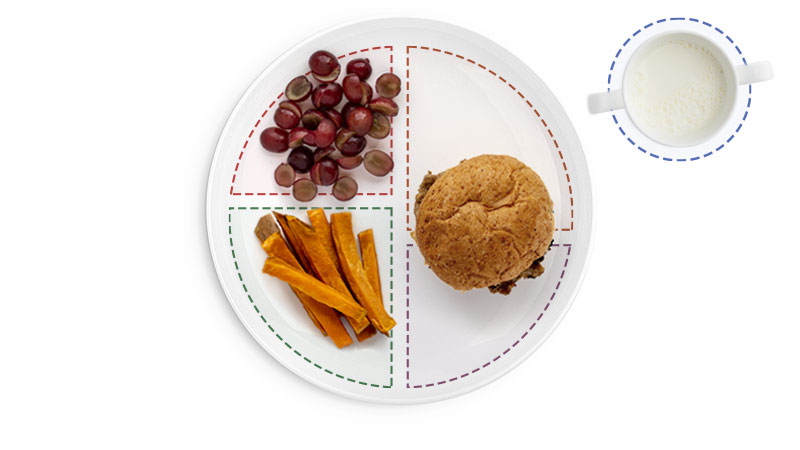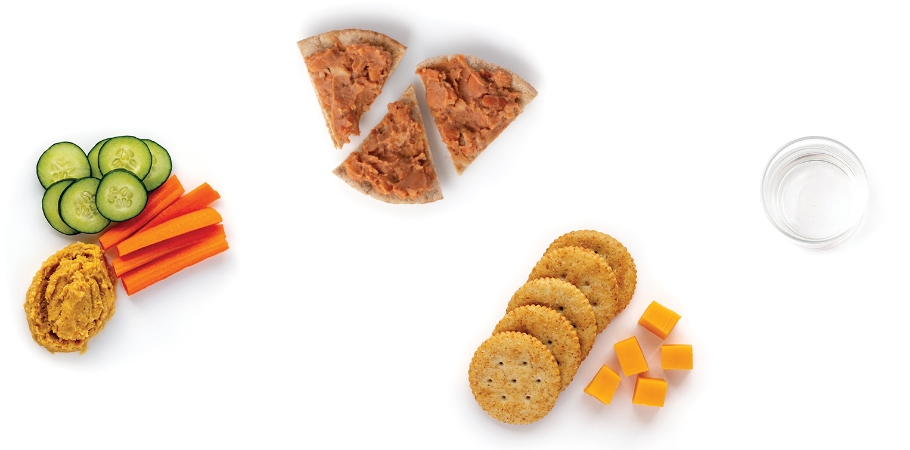I am 4 and want to do more!

I am becoming MORE CONFIDENT.
I like to try new things. You are my teacher. I try to do what you do, so eat healthy foods and I will too.
- I can peel foods using my fingers. Let me practice shucking corn or peeling a banana, an orange, or a hard-boiled egg.
- I can roll food into a ball. I can roll dough into balls or make meatballs or cheeseballs.
- I can use a hand juicer. Put a wet cloth under the juicer to stop it from slipping and show me how to juice halves of grapefruit, oranges, lemons, or limes.
- I can crack the shell of raw eggs. After some practice, I can crack the eggs needed to make scrambled eggs, omelets, or for use in recipes.
- I can mash foods. I can use a fork or potato masher to mash bananas, cooked potatoes, or cooked beans.
Here are some examples of what meal and snack portion sizes might look like on my plate.
Breakfast
½ cup large, sliced strawberries
1 cup low-fat milk

2 small whole grain pancakes with 1 tablespoon syrup
Lunch
½ cup sliced in half grapes
½ cup sliced, baked sweet potato sticks

1 small whole grain bun
with 1 ounce small turkey burger
1 cup low-fat milk
Snacks

½ cup sliced cucumbers and carrots
with ¼ cup chickpea hummus
½ medium whole grain pita bread wedges, toasted
with ¼ cup mashed refried beans
4 or 6 whole grain crackers
with 4 or 5 cubes cheese
water between meals and snacks
Dinner
½ cup baked, sliced apple
½ cup water

1 cup shredded lettuce
on 1 medium whole grain tortilla
with 1½ ounces cooked, lean ground beef
with ½ cup shredded cheese
Daily Suggested Food Group Amounts
FRUITS
3 servings a day
1 serving = ½ cup
(1½ cups total)
Cooked or soft, raw fruit.
Mashed, sliced, or chopped.
Offer a variety: red, yellow, orange, blue, and green.
VEGETABLES
3 servings a day
1 serving = ½ cup
(1½ cups total)
Mashed, sliced, or chopped veggies.
Offer a variety: dark green, orange, red, yellow, and purple.
GRAINS
8-10 servings a day
1 serving = ½ ounce
(4-5 ounces total)
Whole grain bread, tortillas, rice, or noodles.
Dry or cooked cereal.
PROTEINS
3-5 servings a day
1 serving = 1 ounce
(3-5 ounces total)
Cooked lean meat, poultry, or seafood.
Eggs.
Cooked beans, peas, or tofu.
Peanut butter.
DAIRY
5-6 servings a day
1 serving = ½ cup
(2½ cups total)
Low-fat milk.
Yogurt.
Cheese.
Look what I can do!
I learn a lot from being with you and being active. Let’s be active as a family! We can:
- Play a game of tag
- Cook meals together
- Grow a garden at home or in the community
- Run
- Hop
- Swing
- Throw and kick balls
- Go on a walk through the neighborhood
Keep me safe and healthy.
Take me to the doctor for my check-up.
I can brush my own teeth now, but watch me when I do so I don’t miss any teeth.
Remind me to wash my hands often. Washing my hands helps me stay healthy. I should wash them with warm water and soap for 20 seconds.
I need simple rules. Set limits on when, where, and how often we have screen time. Talk about what I’m learning as we watch together and keep me safe from what I shouldn’t see. Let’s focus on each other during meals and snacks, not a screen.
